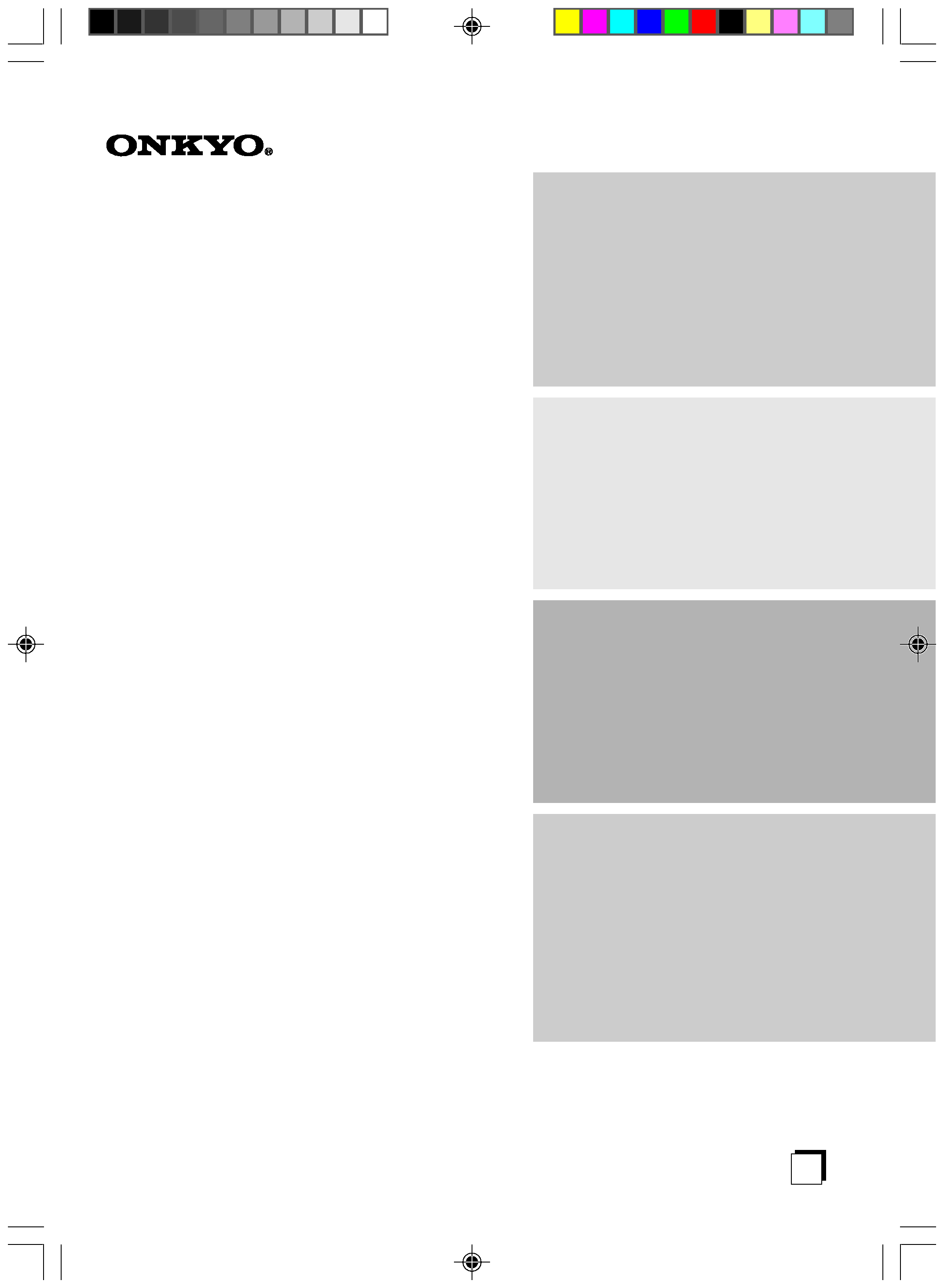
Thank you for purchasing the Onkyo Audio Network
Receiver.
Please read this manual thoroughly before making
connections and plugging in the unit. Following the
instructions in this manual will enable you to obtain
optimum performance and listening enjoyment from
your new Audio Network Receiver.
Please retain this manual for future reference.
NC-500
Audio Network Receiver
Instruction Manual
Before using
2
Connections
18
Operations
26
Other Information
68
Contents
E
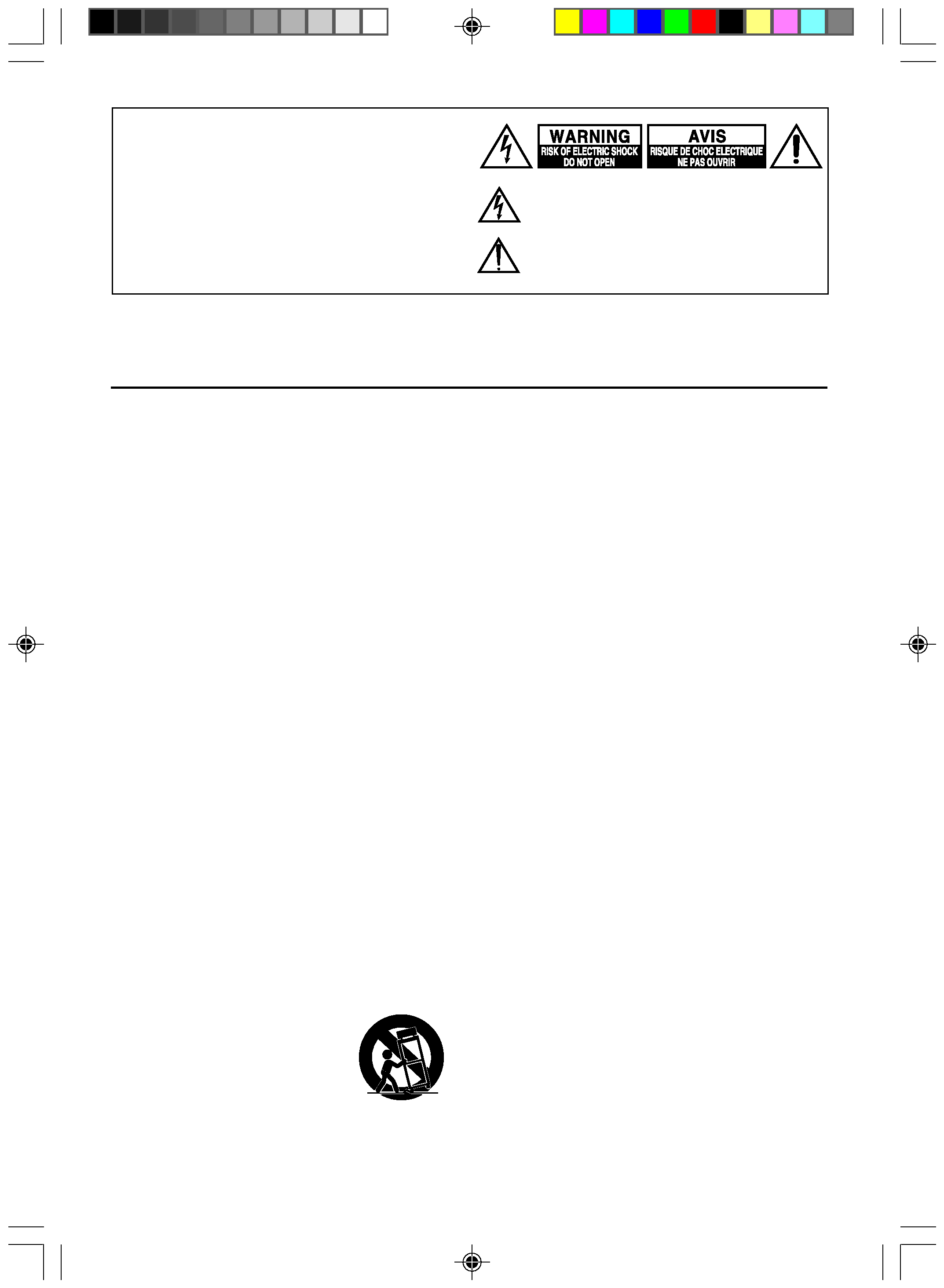
2
1. Read Instructions All the safety and operat-
ing instructions should be read before the appli-
ance is operated.
2. Retain Instructions The safety and operat-
ing instructions should be retained for future
reference.
3. Heed Warnings All warnings on the appli-
ance and in the operating instructions should be
adhered to.
4. Follow Instructions All operating and use
instructions should be followed.
5. Cleaning Unplug the appliance from the wall
outlet before cleaning. The appliance should be
cleaned only as recommended by the manufac-
turer.
6. Attachments Do not use attachments not rec-
ommended by the appliance manufacturer as
they may cause hazards.
7. Water and Moisture Do not use the appli-
ance near water for example, near a bath tub,
wash bowl, kitchen sink, or laundry tub; in a
wet basement; or near a swimming pool; and
the like.
8. Accessories Do not place the appliance on an
unstable cart, stand, tripod, bracket, or table.
The appliance may fall, causing serious injury
to a child or adult, and serious damage to the
appliance. Use only with a cart, stand, tripod,
bracket, or table recommended by the manufac-
turer, or sold with the appliance. Any mounting
of the appliance should fol-
low the manufacturer's in-
structions, and should use a
mounting accessory recom-
mended by the manufac-
turer.
Important Safeguards
9. An appliance and cart combination should be
moved with care. Quick stops, excessive force,
and uneven surfaces may cause the appliance
and cart combination to overturn.
10. Ventilation Slots and openings in the cabinet
are provided for ventilation and to ensure reli-
able operation of the appliance and to protect it
from overheating, and these openings must not
be blocked or covered. The openings should
never be blocked by placing the appliance on a
bed, sofa, rug, or other similar surface. The ap-
pliance should not be placed in a built-in instal-
lation such as a bookcase or rack unless proper
ventilation is provided. There should be free
space of at least 20 cm (8 in.) and an opening
behind the appliance.
11. Power Sources The appliance should be op-
erated only from the type of power source indi-
cated on the marking label. If you are not sure
of the type of power supply to your home, con-
sult your appliance dealer or local power com-
pany.
12. Grounding or Polarization The appliance
may be equipped with a polarized alternating
current line plug (a plug having one blade
wider than the other). This plug will fit into the
power outlet only one way. This is a safety fea-
ture. If you are unable to insert the plug fully
into the outlet, try reversing the plug. If the
plug should still fail to fit, contact your electri-
cian to replace your obsolete outlet. Do not de-
feat the safety purpose of the polarized plug.
13. Power-Cord Protection Power-supply cords
should be routed so that they are not likely to be
walked on or pinched by items placed upon or
against them, paying particular attention to
cords at plugs, convenience receptacles, and
the point where they exit from the appliance.
WARNING:
TO REDUCE THE RISK OF FIRE OR ELECTRIC
SHOCK, DO NOT EXPOSE THIS APPLIANCE TO
RAIN OR MOISTURE.
CAUTION:
TO REDUCE THE RISK OF ELECTRIC SHOCK, DO
NOT REMOVE COVER (OR BACK). NO USER-SER-
VICEABLE PARTS INSIDE. REFER SERVICING TO
QUALIFIED SERVICE PERSONNEL.
The lightning flash with arrowhead symbol, within an equilateral
triangle, is intended to alert the user to the presence of uninsulated
"dangerous voltage" within the product's enclosure that may be
of sufficient magnitude to constitute a risk of electric shock to
persons.
The exclamation point within an equilateral triangle is intended to
alert the user to the presence of important operating and mainte-
nance (servicing) instructions in the literature accompanying the
appliance.
PORTABLE CART WARNING
S3125A
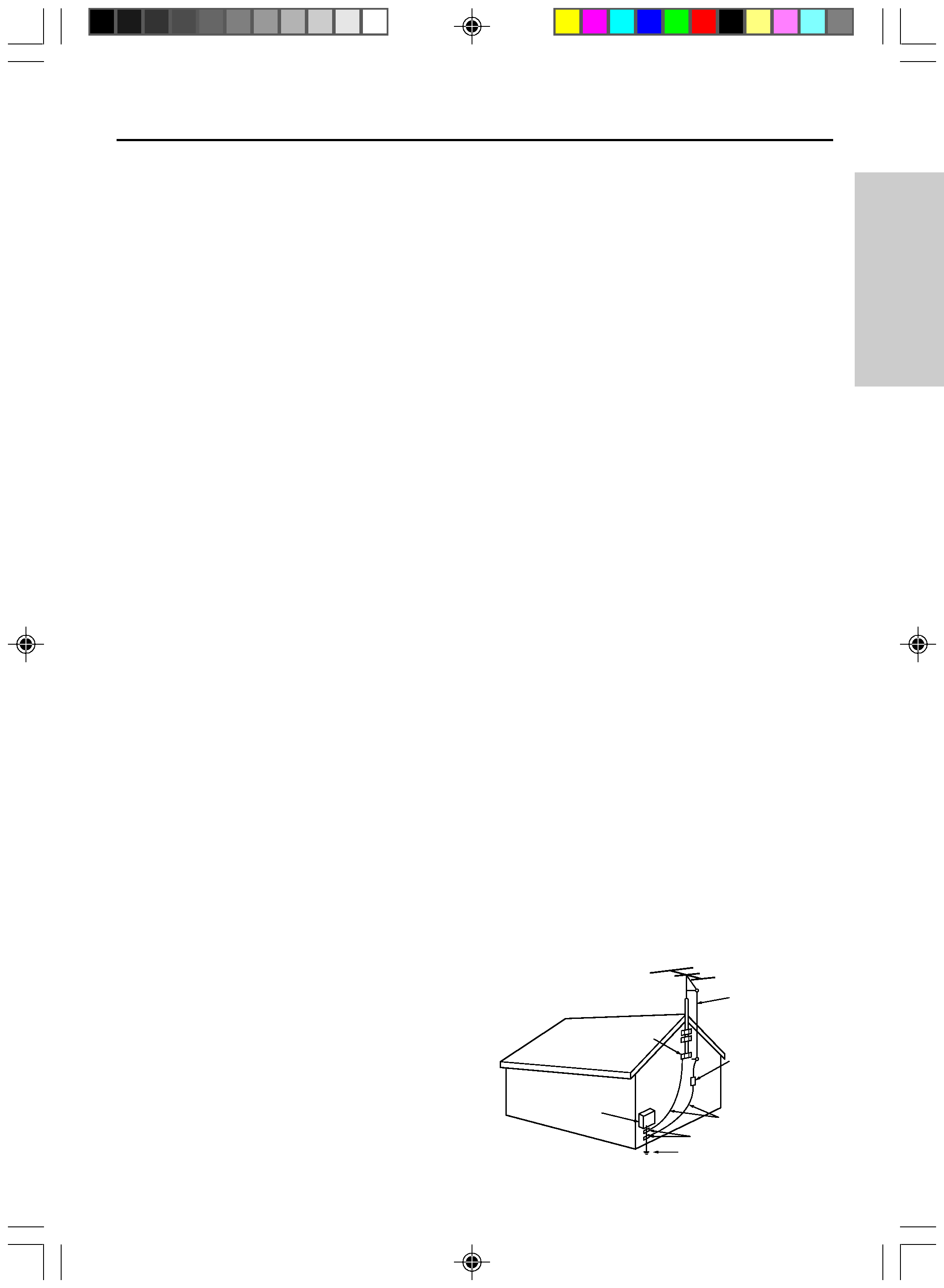
Other
Information
3
C. If the appliance has been exposed to rain or
water,
D. If the appliance does not operate normally
by following the operating instructions.
Adjust only those controls that are covered
by the operating instructions as an im-
proper adjustment of other controls may re-
sult in damage and will often require exten-
sive work by a qualified technician to re-
store the appliance to its normal operation,
E. If the appliance has been dropped or dam-
aged in any way, and
F. When the appliance exhibits a distinct
change in performance this indicates a
need for service.
21. Replacement Parts When replacement parts
are required, be sure the service technician has
used replacement parts specified by the manu-
facturer or have the same characteristics as the
original part. Unauthorized substitutions may
result in fire, electric shock, or other hazards.
22. Safety Check Upon completion of any ser-
vice or repairs to the appliance, ask the service
technician to perform safety checks to deter-
mine that the appliance is in proper operation
condition.
23. Wall or Ceiling Mounting The appliance
should be mounted to a wall or ceiling only as
recommended by the manufacturer.
24. Heat The appliance should be situated away
from heat sources such as radiators, heat regis-
ters, stoves, or other appliances (including am-
plifiers) that produce heat.
25. Liquid Hazards The appliance shall not be
exposed to dripping or splashing and no objects
filled with liquids, such as vases shall be placed
on the appliance.
FIGURE 1:
EXAMPLE OF ANTENNA GROUNDING AS PER NA-
TIONAL ELECTRICAL CODE, ANSI/NFPA 70
14. Outdoor Antenna Grounding If an outside
antenna or cable system is connected to the ap-
pliance, be sure the antenna or cable system is
grounded so as to provide some protection
against voltage surges and built-up static
charges. Article 810 of the National Electrical
Code, ANSI/NFPA 70, provides information
with regard to proper grounding of the mast and
supporting structure, grounding of the lead-in
wire to an antenna-discharge unit, size of
grounding conductors, location of antenna-dis-
charge unit, connection to grounding elec-
trodes, and requirements for the grounding
electrode. See Figure 1.
15. Lightning For added protection for the appli-
ance during a lightning storm, or when it is left
unattended and unused for long periods of time,
unplug it from the wall outlet and disconnect
the antenna or cable system. This will prevent
damage to the appliance due to lightning and
power-line surges.
16. Power Lines An outside antenna system
should not be located in the vicinity of over-
head power lines or other electric light or
power circuits, or where it can fall into such
power lines or circuits. When installing an out-
side antenna system, extreme care should be
taken to keep from touching such power lines
or circuits as contact with them might be fatal.
17. Overloading Do not overload wall outlets,
extension cords, or integral convenience recep-
tacles as this can result in a risk of fire or elec-
tric shock.
18. Object and Liquid Entry Never push ob-
jects of any kind into the appliance through
openings as they may touch dangerous voltage
points or short-out parts that could result in a
fire or electric shock. Never spill liquid of any
kind on the appliance.
19. Servicing Do not attempt to service the appli-
ance yourself as opening or removing covers
may expose you to dangerous voltage or other
hazards. Refer all servicing to qualified service
personnel.
20. Damage Requiring Service Unplug the ap-
pliance form the wall outlet and refer servicing
to qualified service personnel under the follow-
ing conditions:
A. When the power-supply cord or plug is
damaged,
B. If liquid has been spilled, or objects have
fallen into the appliance,
Important Safeguards
ANTENNA
DISCHARGE UNIT
(NEC SECTION 810-20)
GROUNDING CONDUCTORS
(NEC SECTION 810-21)
GROUND CLAMPS
POWER SERVICE GROUNDING
ELECTRODE SYSTEM
(NEC ART 250, PART H)
NEC NATIONAL ELECTRICAL CODE
ELECTRIC
SERVICE
EQUIPMENT
GROUND
CLAMP
ANTENNA
LEAD IN
WIRE
S2898A
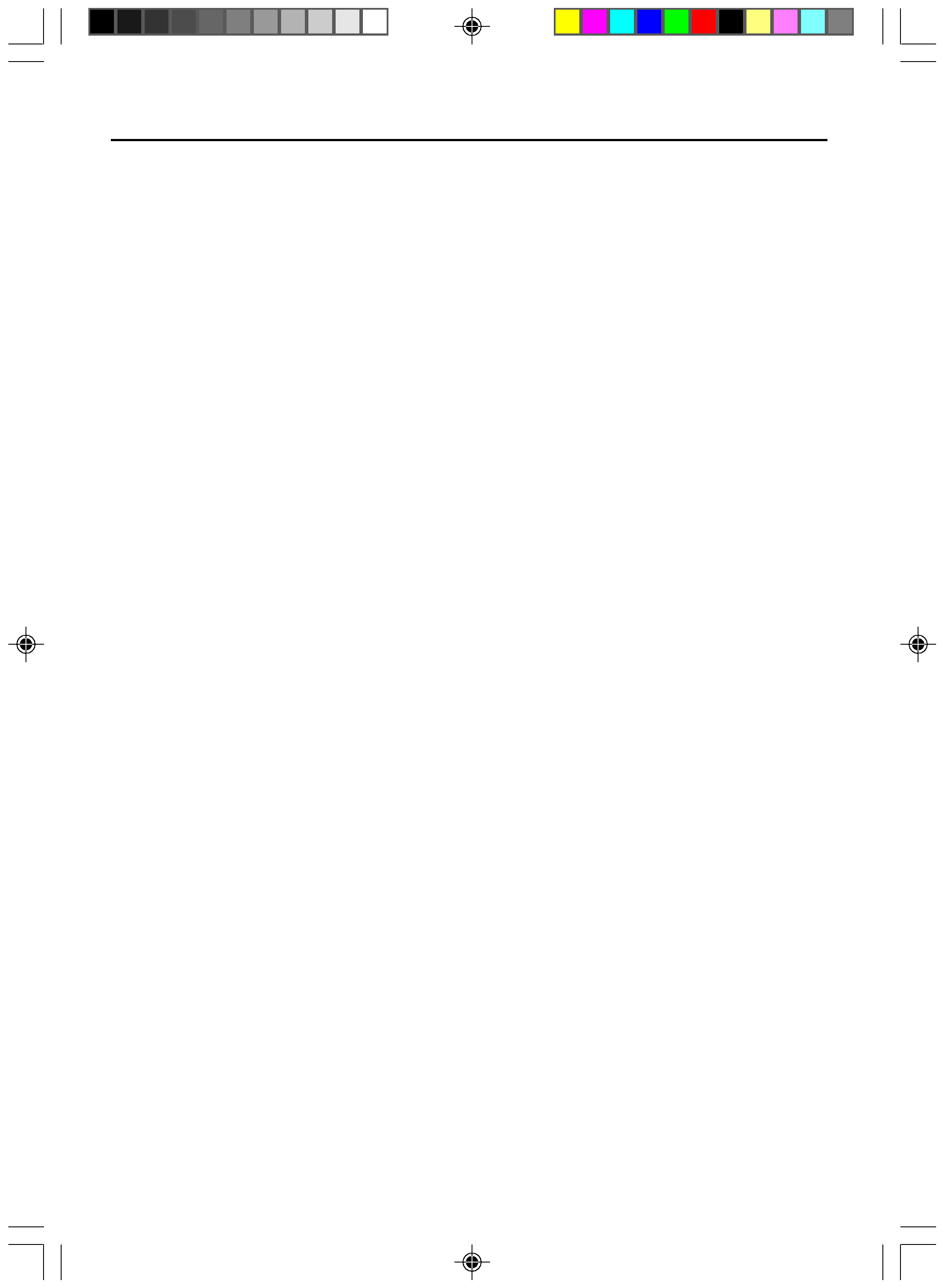
4
Precautions
1. Recording Copyright
Recording of copyrighted material for other than
personal use is illegal without permission of the
copyright holder.
2. AC Fuse
The fuse is located inside the chassis and is not
user-serviceable. If power does not come on, con-
tact your Onkyo authorized service station.
3. Care
From time to time you should wipe the front and
rear panels and the cabinet with a soft cloth. For
heavier dirt, dampen a soft cloth in a weak solution
of mild detergent and water, wring it out dry, and
wipe off the dirt. Following this, dry immediately
with a clean cloth. Do not use rough material,
thinners, alcohol or other chemical solvents or
cloths since these could damage the finish or re-
move the panel lettering.
4. Power
WARNING
BEFORE PLUGGING IN THE UNIT FOR THE
FIRST TIME, READ THE FOLLOWING SEC-
TION CAREFULLY.
The voltage of the available power supply differs
according to country or region. Be sure that the
power supply voltage of the area where this unit
will be used meets the required voltage (e.g., AC
120 V, 60 Hz) written on the rear panel.
Setting the STANDBY button to standby does not
shut off the power completely. So the power cord
should be removed from the AC outlet when the
unit is not used for a prolonged time.
Note to CATV system installer:
This reminder is provided to call the CATV system
installer's attention to Station 820-40 of the NEC,
which provides guidelines for proper grounding
and, in particular, specifies that the cable ground
shall be connected to the grounding system of the
building, as close to the point of cable entry as prac-
tical.
FCC Information for User
CAUTION:
The user changes or modifications not expressly
approved by the party responsible for compliance
could void the user's authority to operate the equip-
ment.
NOTE:
This equipment has been tested and found to com-
ply with the limits for a Class B digital device, pur-
suant to Part 15 of the FCC Rules. These limits are
designed to provide reasonable protection against
harmful interference in a residential installation.
This equipment generates, uses and can radiate ra-
dio frequency energy and, if not installed and used
in accordance with the instructions, may cause
harmful interference to radio communications.
However, there is no guarantee that interference
will not occur in a particular installation. If this
equipment does cause harmful interference to radio
or television reception, which can be determined by
turning the equipment off and on, the user is en-
couraged to try to correct the interference by one or
more of the following measures:
· Reorient or relocate the receiving antenna.
· Increase the separation between the equipment
and receiver.
· Connect the equipment into an outlet on a cir-
cuit different from that to which the receiver is
connected.
· Consult the dealer or an experienced radio/TV
technician for help.
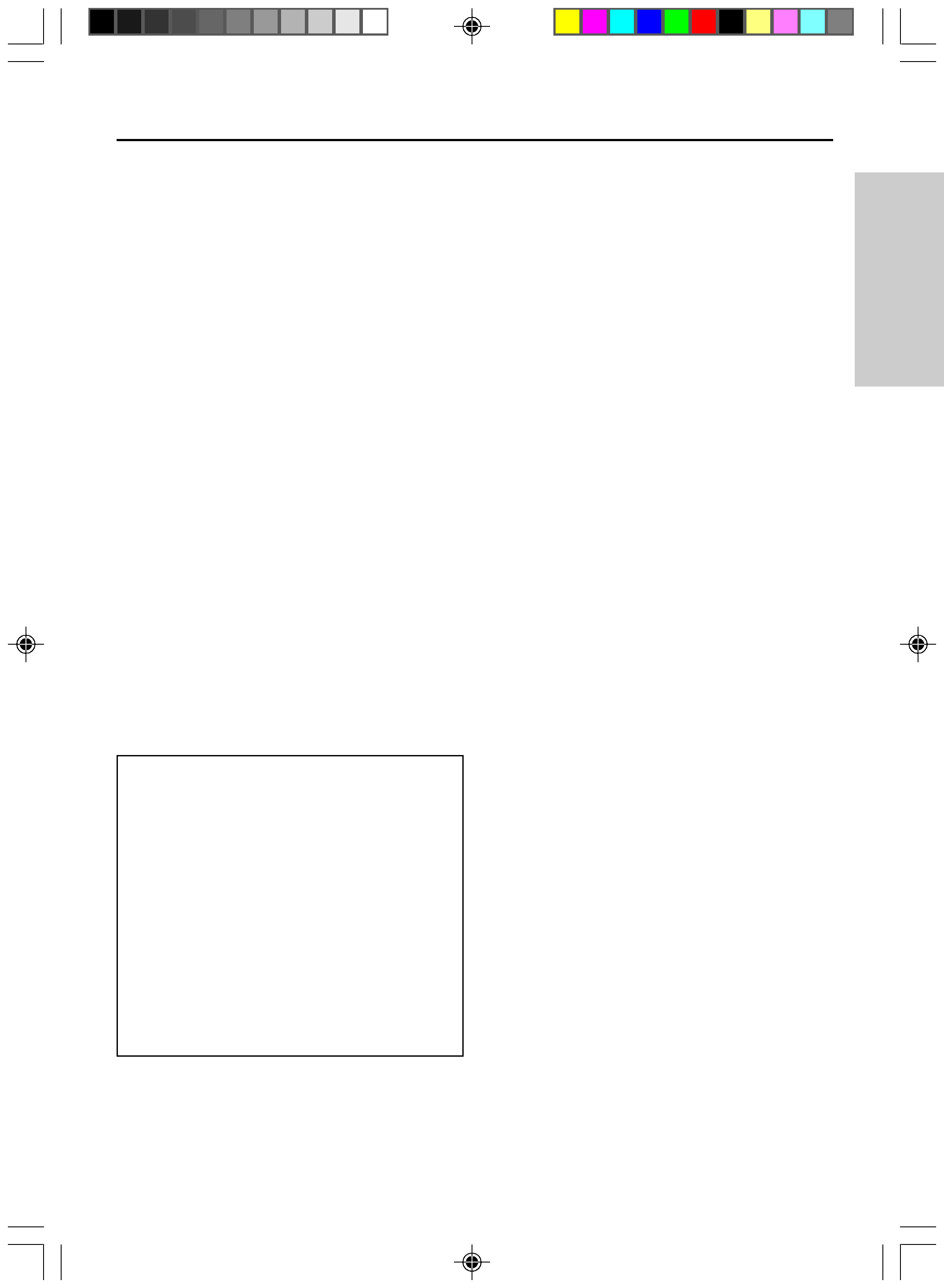
Other
Information
5
Precautions
For Canadian models
NOTE: THIS CLASS B DIGITAL APPARA-
TUS COMPLIES WITH CANADIAN ICES-003.
For models having a power cord with a polarized
plug:
CAUTION: TO PREVENT ELECTRIC
SHOCK, MATCH WIDE BLADE OF PLUG TO
WIDE SLOT, FULLY INSERT.
THIS CLASS B DIGITAL APPARATUS COM-
PLIES WITH CANADIAN ICES-003.
Modèle pour les Canadien
REMARQUE:
CET
APPAREIL
NUMÉRIQUE DE LA CLASSE B EST CON-
FORME À LA NORME NMB-003 DU CANADA.
Sur les modèles dont la fiche est polarisée:
ATTENTION: POUR ÉVITER LES CHOCS
ÉLECTRIQUES, INTRODUIRE LA LAME LA
PLUS LARGE DE LA FICHE DANS LA BORNE
CORRESPONDANTE DE LA PRISE ET
POUSSER JUSQU'AU FOND.
CET APPAREIL NUMÉRIQUE DE LA CLASSE
B EST CONFORME À LA NORME NMB-003
DU CANADA.
Memory Preservation
This unit does not require memory preservation
batteries. A built-in memory power back-up sys-
tem preserves the contents of the memory dur-
ing power failures and even when the unit is un-
plugged. The unit must be plugged in order to
charge the back-up system.
The memory preservation period after the unit
has been unplugged varies depending on climate
and placement of the unit. On the average,
memory contents are protected over a period of
a few weeks after the last time the unit has been
unplugged. This period is shorter when the unit
is exposed to a highly humid climate.
